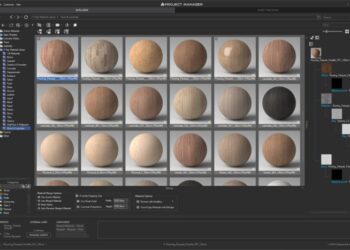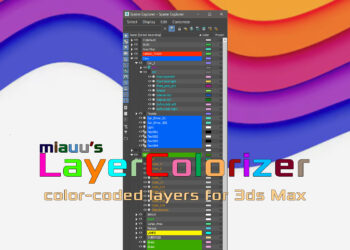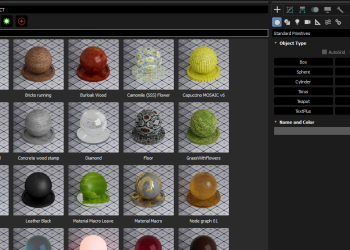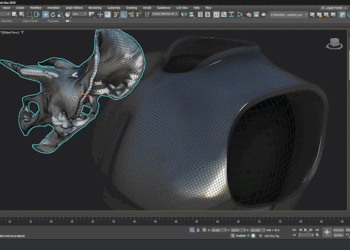Sitni Sati has finally released FumeFX, a plugin for Max that simulates fire and smoke effects and their interaction with scene objects. FumeFX provides extensive support for Particle Flow and Thinking Particles as well as advanced scripting capabilities via Maxscript. Detailed information can be found at Afterworks.com, along with a few sample videos.
Recent Comments
- d3d on Blender 5.0 released
- Rawalanche on Blender 5.0 released
- d3d on Autodesk releases 3ds Max 2026.3
- Damm on Autodesk releases 3ds Max 2026.3
- Stephen Lebed on Blender 5.0 released
Popular Stories

CGPress is an independent news website built by and for CG artists. With more than 15 years in the business, we are one of the longest-running CG news organizations in the world. Our news reporting has gathered a reputation for credibility, independent coverage and focus on quality journalism. Our feature articles are known for their in-depth analyses and impact on the CG scene. “5 out of 5 artists recommend it.”
© 2025 CGPress







don’t buy it yet! TurboSquid is NOT READY.
It is now.
I bought it on friday – Kresimir is dealing with license requests himself, the downloads are via the sitni sati site and it’s all up and going. The demo version is scheduled to be out in January. Scenes made with the demo version apparently won’t be able to be loaded in the full version. He also mentioned that they’re working on a way to make their licenses exportable.
Cheers!
I don’t quite understand why the website (simulation page) specifies the render quality/time based on cell, spacing, I think the cell, Count is really what you want here. Spacing is relevant to the grid size, the units for which are not mentioned ( could be in either local, global, camera or in any other space), so its quite ambiguous…
Admittedly I have to wait until I get back into work for my license since I don’t want to lock it to my home machine but I’m going to presume that it’s quite like segment controls on any max primitive – you take the initial grid and divide it up using spacing to determine how far apart each cell is – it effectively is cell count just using spacing as the method of determining size – say for example you have a scene with a large fume and a small fume in it but you want the two effects to be the same type of smoke you’d probably need the cell size to be the same to ensure the same look or level of detail in the end results – trying to work out cell count could be a pain in the ass especially if you’re using object emitters that don’t have a box shaped boundary. Cell spacing would be way handier in this regard in my opinion.
Figuring out the cell count is quite simple. Once you compute the bounds of the Objects, i.e. the bounding-box, you can easily discretize that space (with even spacing in this case) using nx*ny*nz cells. Of course, you could say that using a bounding box (how about a bounding sphere?) is most inefficient in some cases (quite often actually), well that is where non-uniform spacing or adaptive methods come in for grid-based simulations, which isn’t applicable here.
Anyway, the cell count should always come first as that pretty much determines your sim times. The spacing by itself does not really mean anything (esp. without any units).
>>Figuring out the cell count is quite simple.
Sorry, I should have omitted that bit because later on I am speaking of something different 🙂 .
LACKLUSTER … A over tweeled afterburn .. to pricey ..
On the simulation page it is irrelevant how many voxels there are. What matters is a relation between spacing (which relates to voxel count), simulation time, and rendering output.
Overpriced afterburn?
Aside from custom in house tools there was nothing like afterburn around for years – it was always better than pyrocluster (didnt try pyro 3 admittedly) and for the price was amazing value considering what it was used for. One of the things that let down afterburn was the movement which itself had to be controlled by an underlying particle system – max never had any kind of fluid effects so now it’s got that area covered too. I’m going to recoup the cost of fume on the first job I use it on because there’s NOTHING else that can do this in max. Afterburn and fume are very specialist admittedly, you’d want to have a very good reason to buy them but if you’re doing effects stuff they’re going to make your life much much easier.
This is pretty impressive, though there will always be a need for a tool like Afterburn.
I’m very impressed with it so far.
Render times are fine – simulation times can get lengthy if you want large areas covered, but I’m just scratching the surface of it.
Like Brandon says, Afterburn has it’s place – I could see Afterburn or fog being used to bulk out areas, and using FumeFX on specific areas.
I’ve never used Maya’s fluids – how do they compare?
Cheers
Steve